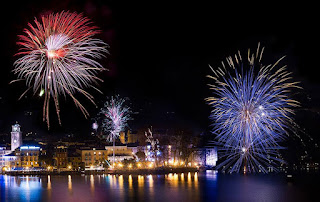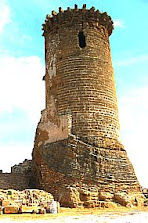A chance to enjoy quieter cities while Italians take a holiday
 |
| Ferragosto is a traditional festival that dates back to Roman times and has religious significance too |
This day of celebration originated during Roman times, when Feriae Augusti, the festival of the Roman Emperor Augustus, took place on 1 August. It was a day of rest for working people to signal the culmination of weeks of hard work by labourers on the land.
The month of August itself is named after Augustus. Its original name was sextilis, as it was the sixth month in the Roman calendar. Just as Julius Caesar had previously renamed quintilis - the fifth month - Iulius after himself, it was only natural for Augustus, as Julius Caesar’s chosen heir, to follow suit.
Over the centuries, it became traditional for workers to wish their employers ‘Buon Ferragosto, and to receive a bonus of extra money from their bosses in return. During the Renaissance, this tradition actually became law throughout the Papal States.
The Catholic Church moved the date for Ferragosto to 15 August to coincide with the celebrations for the Feast of the Assumption, a day of worship to mark the ascendance of the Virgin Mary into Heaven.
.jpg) |
| Many Italians head for the nation's famous beaches when the Ferragosto holiday begins |
Horses, donkeys and mules were also released from their work for this period in August and it therefore became traditional for their owners to decorate them with flowers to celebrate their holidays. As a result, horse races, such as the Palio dell’Assunta in Siena became established and the first of the two annual runnings of the famous Palio still takes place on 16 August.
The name Palio is thought to derive from the Latin word pallium, which refers to the piece of precious fabric that was given to the winners of horse races in Roman times. The 19th century opera, Pagliacci, by Ruggero Leoncavallo was named because the action in the story is meant to have taken place on the day of Ferragosto.
Nowadays, many businesses close for two weeks in the middle of August and their employees take a mandatory holiday during this period. Ferragosto gives Italians the chance to escape from the heat of the cities by taking a trip to the seaside, lakes or mountains. News bulletins are often dominated by reports of huge traffic jams on the autostrade as Italians leave the cities en masse.
 |
| The history of the Palio di Siena is closely linked with the traditions of Ferragosto |
In many parts of Italy, there are special church services, religious processions and fireworks displays to enjoy on 15 August. It is traditional for families to get together to celebrate Ferragosto and therefore restaurants are open and many even offer special festive menus.
Public transport operates on a reduced ‘festivi’ timetable, so it is a good idea to check the times of buses and trains as they may be different from usual.
Buon Ferragosto!
 |
| Ferragosto is a good time to visit attractions such as the Colosseum |
It is well worth visiting Rome at Ferragosto as the city will be quieter than usual, but the main cultural sites, such as the Pantheon, the Colosseum and Castel Sant’Angelo are all open. Most restaurants will remain open and many will be serving Pollo alla Romana, the traditional Roman Ferragosto dish of chicken cooked in a sauce of red and orange peppers and tomatoes.
 |
| Ferragosto on Lake Garda is famous for many spectacular fireworks displays |
Lake Garda in Lombardy is a lively place to visit for Ferragosto as there are often fireworks displays, live music and other events taking place at the side of the lake in many of the resorts. The town of Garda is famous for its Palio delle Contrade, a rowing race staged in celebration of the fishing community that has been repeated annually for over 50 years. It takes place as dusk falls on the stretch of water between the port and the town hall, contested by the flat-based gondolas representing the nine contrade - neighbourhoods - of the town. Each boat is crewed by four oarsmen in full traditional costume, with the winners receiving a wooden statue of Our Lady Of Assumption.
Also on this day:
1702: The birth of landscape painter Francesco Zuccarelli
1922: The birth of economic historian Carlo Cipolla
1944: The birth of fashion designer Gianfranco Ferré

.jpg)


.jpg)
.jpg)
.jpg)


.jpg)

.jpg)
%20(1).jpg)

_-_Foto_Giovanni_Dall'Orto,_12-Aug-2007_-_02%20(2).jpg)


.jpg)

.jpeg)

.jpg)

%20(2).png)

.jpg)

%20(2).jpg)

.jpg)
